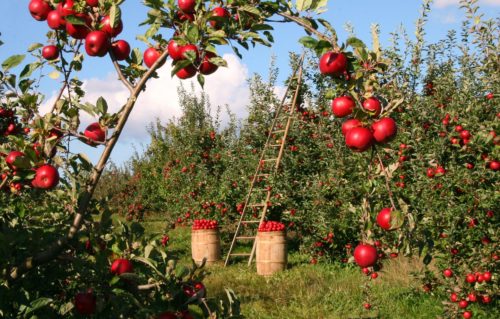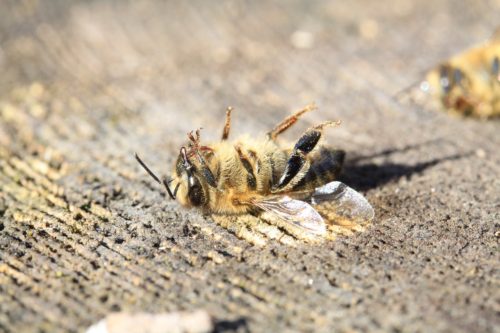The Nitrogen Cycle is Seizing Up Globally and Scientists Might Not Be Ready to Hear It
Andrew Elmore ·Scott Fitzgerald once wrote that “the test of a first-rate intelligence is the ability to hold two opposed ideas in the mind at the same time, and still retain the ability to function.” When it comes to the environment, this is a test that many of us have not passed yet.
On the one hand, humans introduce massive amounts of nitrogen into ecosystems (think fertilizers and animal manure). As a result, we see runaway algae production and low-oxygen dead-zones worldwide. The wide-spread nature of these phenomena have led scientists to assert that all the nitrogen that humans introduce into ecosystems has caused us to exceed a planetary boundary of sustainability. Here at IAN, we regularly integrate data and communicate evidence attesting that there is too much nitrogen in waterways. This assertion that nitrogen is becoming too abundant is indisputable.
Yet, the opposite idea—that nitrogen is becoming too scarce—also seems to be true. Joe Craine and I recently completed an analysis of global trends in leaf chemistry and found that nitrogen availability in unfertilized plants has actually been declining. This decline is clearly counter to widely popularized perceptions that nitrogen pollution is a critical societal problem everywhere, but consistent with theory and models predicting reductions in nitrogen availability associated with rising carbon dioxide in the atmosphere. Our findings come out today in Nature Ecology & Evolution, and so begins the uphill battle of getting people to believe two things at once: there is both too much nitrogen and too little nitrogen on Earth at the same time.

Why should I care?
Nitrogen is an essential element for plants and the animals that eat them, and its availability is therefore an excellent indicator of productivity. For example, your garden is more productive when fertilized with nitrogen, productive forests supply more timber, and fisheries in productive estuaries feed more people. If productivity and plant nitrogen content go hand-in-hand, what happens when nitrogen becomes less available? The answer should make sense: trees grow more slowly than they would have otherwise and their leaves are less nutritious to insects, thus suppressing population sizes. The same goes for the birds and bats that eat those insects. When nitrogen is less available, every living thing holds on to the element for longer, slowing the flow of nitrogen from one organism to another through the food chain. This is why we can say that the nitrogen cycle is seizing up.

Interesting result, but hard to communicate
There are two challenges to communicating this result. The first is that scientists have focused on nitrogen as a pollutant for many decades. And for good reason: humans have roughly doubled the total amount of reactive nitrogen (e.g. fertilizer) introduced annually on Earth. This nitrogen becomes concentrated in coastal bodies of water and inland lakes, sometimes resulting in eutrophication, low-oxygen dead-zones, and harmful algal blooms. But this is clearly just part of the story because, everywhere else, nitrogen is limiting to plant growth. Communicating this new result requires us to convince scientists to start thinking about the effects of reduced nitrogen availability and its impact on trees, insects, birds, and bats. You will know they are starting to catch on when you start seeing the word ‘oligotrophication’ – a new word for many scientists.
The second challenge to communicating this result is that the impact on humans is not dramatic. When we pitched the idea to an important online journal, the response was, “Call us when the trees are dying!” A slower nitrogen cycle that just moves the needle on tree growth and other forms of global production is apparently not interesting enough for mass communication. However, we need to get the word out that major changes are looming. A recent article in the Washington Post used the words ‘hyper-alarming’ to communicate the finding that insect populations around the world are crashing. Could the cause be reduced nitrogen availability? Only after global trends in nitrogen are widely known and accepted will we see thoughtful analysis of such a question.

There is a bright side
The notion that nitrogen is an important pollutant in surface and ground waters is pervasive and drives major investments in land management in developed nations around the world. Even with this large investment, success is not guaranteed because no one has solved the vexing problem of agricultural runoff. At the same time, however, we have observed that nitrogen export from forested watersheds is declining. Water from some of our best-studied headwater streams has virtually no measurable nitrogen at all! This increasingly unpolluted water mixes with polluted water from agricultural basins, and over time, we have seen improvements in the water quality of the resulting mixture. Water quality improvements in forested watersheds are a huge gift to humanity that will continue to increase water quality in coastal waters, making restoration efforts more tractable.

About the author
Andrew Elmore

Dr. Elmore is Professor of landscape ecology at the University of Maryland Center for Environmental Science, Appalachian Laboratory and at the National Socio-environmental Synthesis Center. He works broadly across issues relevant to global environmental change, with a particular interest in ecosystem interactions with land-use and land-cover change. Recent work has focused on the effect of groundwater decline on wind erosion and air quality in deserts; the impact of urban stream burial on stream network structure and functioning; modeling coastal habitat change associate with sea level rise; and, understanding forest responses to changes in spring and autumn timing associated with climate change. He applies an array of tools to these problems, but has made the greatest impact on methods for analyzing satellite and airborne remote sensing data. Dr. Elmore received a BSc in Applied Physics from Purdue University and an MSc and PhD in Geoscience from Brown University. He worked as a postdoctoral scholar at the Carnegie Institution for Science and Dartmouth College before moving to Maryland.

